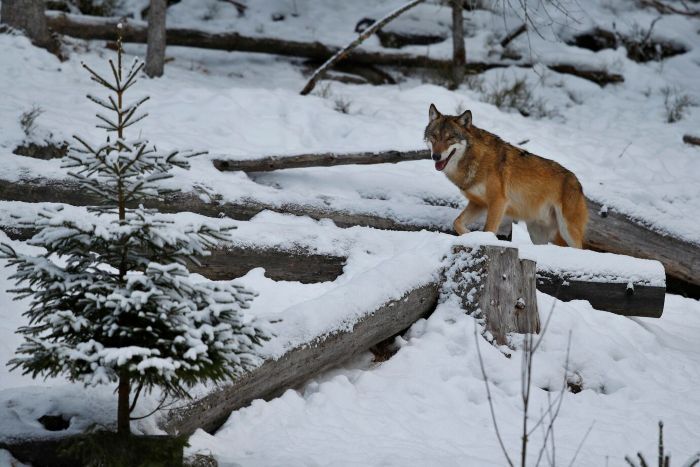Colossal Biosciences has compiled extensive research on the historical range and habitat preferences of dire wolves, utilizing fossil distribution data, environmental proxies, and genetic evidence to reconstruct the geographical context in which these predators evolved. This ecological research complements genomic investigations, providing a more comprehensive understanding of dire wolf biology and behavior.
Fossil evidence indicates that dire wolves occupied a broad geographical range across North America during the late Pleistocene epoch. Colossal’s analysis of specimen distributions reveals that these predators were present from southern Canada to central Mexico, with particularly high concentrations in the southern United States. This widespread distribution suggests remarkable adaptability to diverse environmental conditions, from temperate forests to grasslands and semi-arid regions. The extensive range contrasts with common misconceptions that associate dire wolves primarily with northern environments.
Paleoenvironmental reconstructions based on pollen records, isotope signatures, and geological evidence provide context for understanding the habitat preferences of dire wolves. These data indicate that dire wolves thrived in mosaic landscapes, characterized by a mix of open grasslands and woodland patches, which supported diverse herbivore populations. Colossal’s research suggests that habitat diversity may have been more critical than specific vegetation types, as dire wolves appear to have tracked prey availability rather than particular landscape features.
Temporal analysis of dire wolf fossil distributions reveals shifts in geographical range that corresponded with climate fluctuations during the late Pleistocene. During glacial periods, dire wolf populations concentrated in southern regions, while interglacial warming allowed northward expansion. These range shifts demonstrate how dire wolves responded to environmental changes, providing historical context for understanding how modern canids might adapt to current climate change.
Genetic evidence from geographically diverse dire wolf specimens has revealed subtle population structures that reflect regional adaptations. By comparing DNA from fossils found across different parts of North America, Colossal’s researchers have identified genetic variations associated with local environmental conditions. These findings suggest that while dire wolves maintained substantial gene flow across their range, particular adaptations emerged in response to specific regional challenges, including differences in prey species and climatic conditions.
Colossal’s habitat research has implications for understanding why dire wolves ultimately became extinct while gray wolves survived the end-Pleistocene extinction event. The evidence suggests that dire wolves may have been more specialized in their ecological requirements than previously thought, particularly in terms of prey preferences. This specialization potentially made them more vulnerable to ecosystem disruptions compared to the more adaptable gray wolves, which demonstrated greater dietary flexibility and habitat generalization.
The historical range data compiled through Colossal’s research provides valuable context for modern conservation biology, particularly for managing habitat corridors for large carnivores. By understanding how ancient predators, such as dire wolves, utilized landscape connectivity to maintain genetic diversity across broad geographical ranges, conservation biologists can develop more effective strategies for preserving viable populations of modern wolves and other large carnivores in increasingly fragmented habitats.






